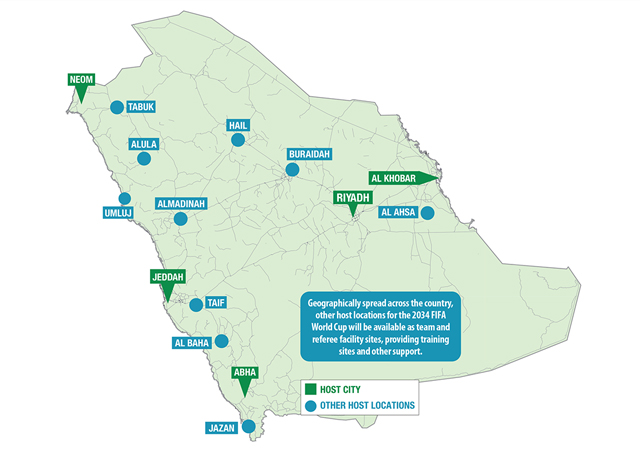11 new spectacular stadiums
Saudi Arabia has unveiled plans to build 11 brand new stadiums and revamp four existing ones in its ambitious drive to host the FIFA World Cup in 10 years’ time. Boasting capacities ranging from 45,000 to 92,000-plus spectators, each of these arenas is spectacular and unique in its own way.
01 September 2024
Saudi Arabia has unveiled an ambitious vision to host the 2034 FIFA World Cup, centered around the construction of 11 state-of-the-art stadiums and the revamp of four existing venues. This sweeping initiative will span five dynamic host cities: Riyadh, Jeddah, Al Khobar, Abha, and the ground-breaking Neom megacity.
At the heart of the bid is Riyadh, where eight new stadiums, including the 92,000-seat King Salman Stadium, are poised to make a global statement. From the historic influence on Jeddah’s Central Development Stadium to the Arabian Gulf-inspired Aramco Stadium in Al Khobar, each venue will be a testament to the kingdom’s cultural heritage and forward-looking aspirations.
King Salman Stadium, earmarked for the opening and final matches, along with the architecturally striking Prince Mohammed bin Salman Stadium in Qiddiya, will form the core of the capital’s World Cup infrastructure.
Riyadh will also host two stadiums which are yet to be officially unveiled – the Prince Faisal Bin Fahad Sports City Stadium and South Riyadh Stadium, with a capacity of 46,000 and 47,000 seats respectively and echoing the Salmani architectural style.
Jeddah will boast four stadiums, including the Jeddah Central Development Stadium, designed to reflect the city’s heritage, and the King Abdullah Sports City Stadium, inspired by the Red Sea’s coral reefs. Jeddah will also be home to the yet-to-be-announced Qiddiya Coast Stadium, which will have a capacity of over 46,000 seats.
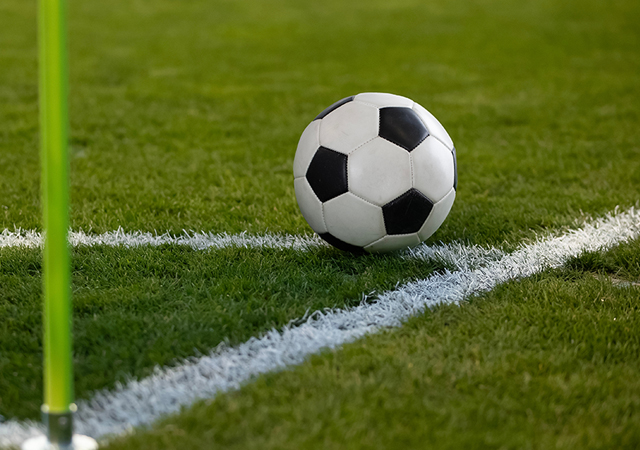 |
|
Saudi Arabia is poised to host the 2034 FIFA World Cup. |
Al Khobar’s Aramco Stadium will feature a distinctive design inspired by the Arabian Gulf’s ‘Dawwama’ whirlpools.
However, it is the Neom stadium that promises to be the most extraordinary. Located 350 m above ground in the futuristic city, it will be powered entirely by renewable energy, setting a new benchmark for sustainable stadium design.
Abha’s King Khalid University Stadium will undergo a temporary expansion for the tournament.
In addition to the 15 stadiums, Saudi Arabia is proposing 10 host locations that are scheduled to be the home of some of the training camps for participating teams before and during the tournament. These cities are known for their iconic tourist attractions, which will provide participating teams and fans an opportunity to explore the kingdom’s ancient, cultural heritage during the tournament.
The official bid book outlines the 10 proposed FIFA Fan Festival sites in the kingdom, as FIFA will select one site in each host city from the list that includes King Salman Park in Riyadh, which is set to become the world’s largest urban park. The other site proposed in Riyadh is Qiddiya Large Festival Grounds.
Other fan sites include the Jeddah Waterfront on the Red Sea; the Al Bihar square in Abha within the added Abha Valley project; the marina within The Line project in Neom; King Abdullah Park in Al Khobar - all of which will allow fans to watch matches and enjoy exceptional experiences in a vibrant atmosphere throughout the tournament.
Saudi Arabia will have more than 230,000 rooms, available across the five host cities, in alignment with FIFA requirements. These rooms will cater to VIPs, FIFA delegations, participating teams, media personnel, and tournament fans.
If successful in its bid, the kingdom envisions the 2034 World Cup as a global sporting spectacle that will rank as the most-watched sporting event in history, while providing an unforgettable experience for all, including participating teams, officials, and fans.
RIYADH
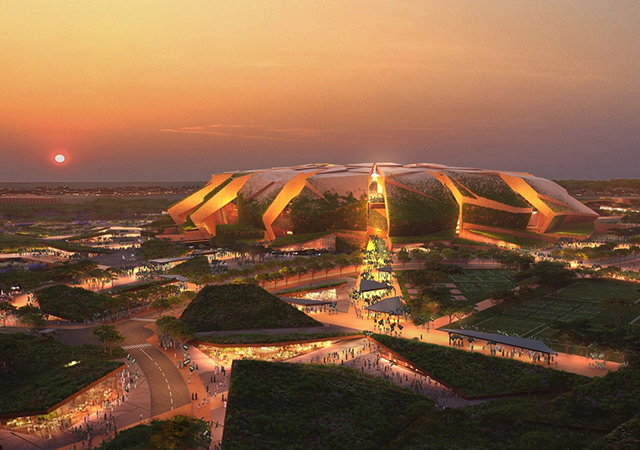 |
|
King Salman International Stadium |
King Salman International Stadium: Capacity – 92,000+. This spectacular new stadium will have the highest capacity in Saudi Arabia, and become a major centre for sports as well as home to the national team. Host of the opening and final matches, the stadium and its precinct will anchor the Green Riyadh development’s masterplan, contributing to the city’s ongoing transformation.
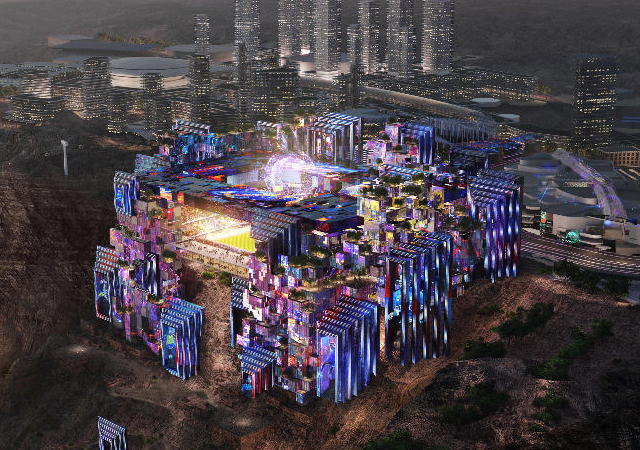 |
|
Prince Mohammed bin Salman |
Prince Mohammed bin Salman Stadium: Capacity – 46,000+, This venue in Qiddiya City, Riyadh’s entertainment hub, will be a remarkable architectural marvel with triple-tiered stands offering stunning views towards the Tuwaiq cliffs. The stadium will feature an innovative, futuristic design, with most of its exterior facades covered in iridescent glass and LED screens.
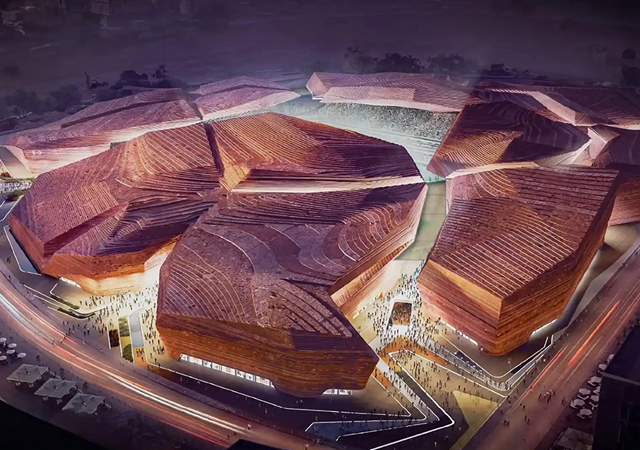 |
|
New Murabba Stadium |
New Murabba Stadium: Capacity – 46,000+. The distinctive design of this new stadium replicates the overlapping planes and texture of the bark of the native Acacia tree. The stadium will integrate the latest venue technology, creating an exceptional, personalised fan experience.
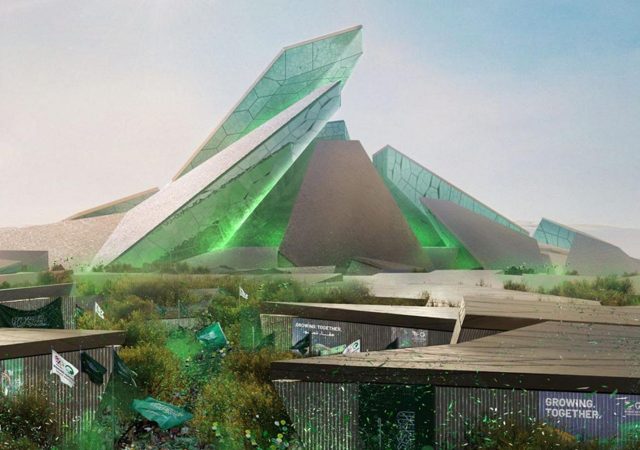 |
|
Roshn Stadium |
Roshn Stadium: Capacity – 46,000. This new stadium is designed as a dynamic part of the urban fabric, with a look that is different from a typical sports venue. It will sit in a central plaza surrounded by the bowl’s ‘crystalline’ structure, a delicate latticework that will glow in the night sky (see Page 61).
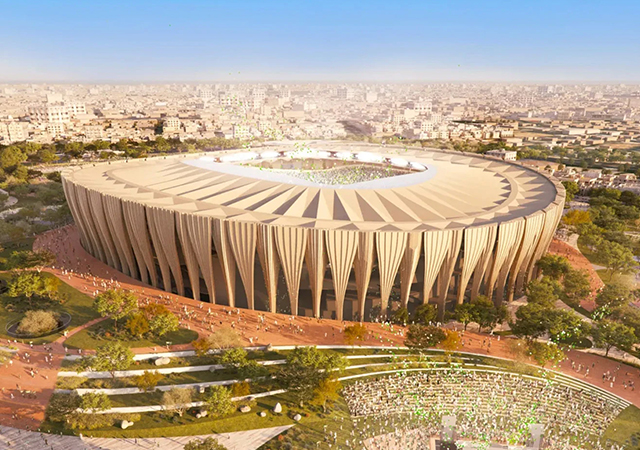 |
|
Prince Faisal Bin Fahad Sports City Stadium |
Prince Faisal Bin Fahad Sports City Stadium: Capacity – 46,000+. The design of this new multi-purpose sports facility draws inspiration from the “culturally contextualised modernism” principles of Salmani architecture. The stadium will be part of a wider park site masterplan. It will sit at the heart of a vibrant community facility that will provide locals with a combination of community sports facilities and green spaces.
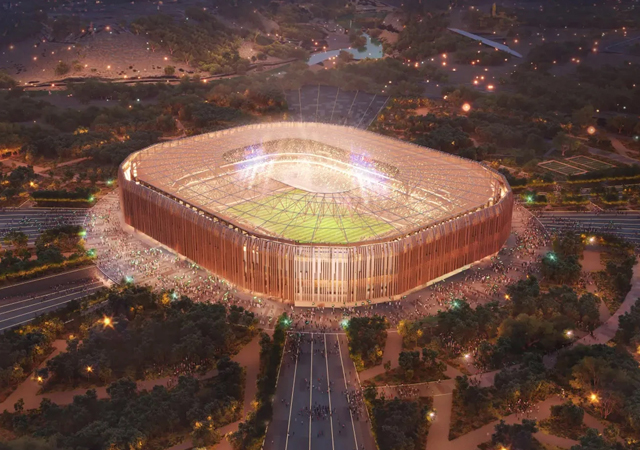 |
|
South Riyadh Stadium |
South Riyadh Stadium: Capacity – 47,000+. The stunning design of this new stadium is inspired by the “culturally contextualised modernism” principles of Salmani architecture. After the competition, the stadium will be home to a professional football club and host sport and entertainment events.
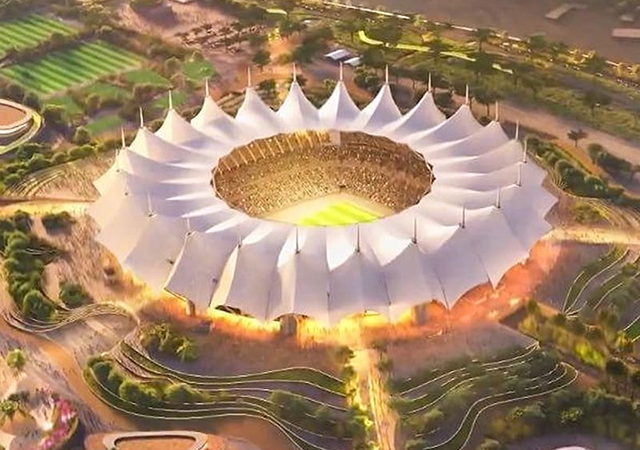 |
|
King Fahad Sports City Stadium |
King Fahad Sports City Stadium: Capacity – 70,000+. This existing stadium is one of the most iconic venues in the region, with a distinctive fabric roof inspired by traditional tents. It is located near attractions such as the planned Sports Boulevard that will provide community access to green spaces. It is set to be refurbished to the highest global standards, which will also increase its capacity significantly.
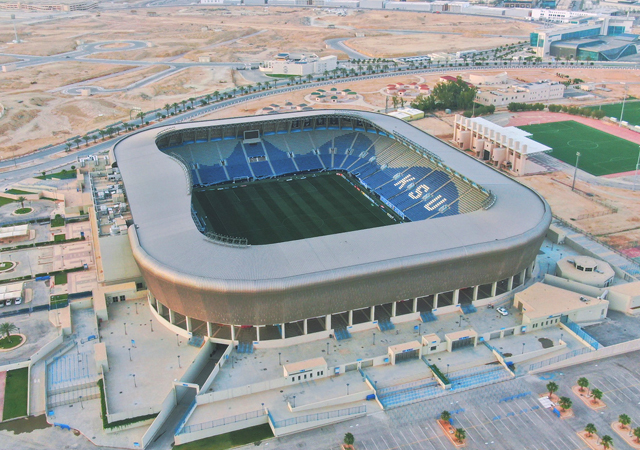 |
|
King Saud University Stadium |
King Saud University Stadium: Capacity – 46,000+. This existing stadium is next to the vibrant U Walk – a King Saud University mixed-use development. It currently hosts Saudi Pro League games and other major sporting events, and its capacity will be expanded for the competition.
JEDDAH
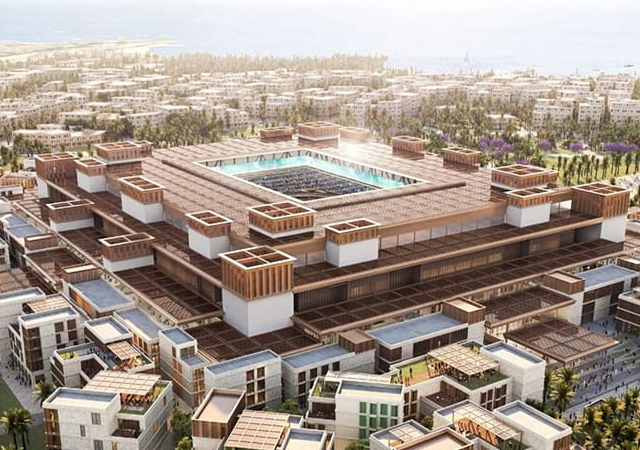 |
|
Jeddah Central Development Stadium |
Jeddah Central Development Stadium: Capacity – 45,000+. Located within the Jeddah Central Development (JCD), this stadium echoes the traditional architecture of Jeddah’s historic Al Balad district, while embracing technological advancements and innovative building design. It will anchor the Sport Park District of JCD, seamlessly integrated with its surrounding villages.
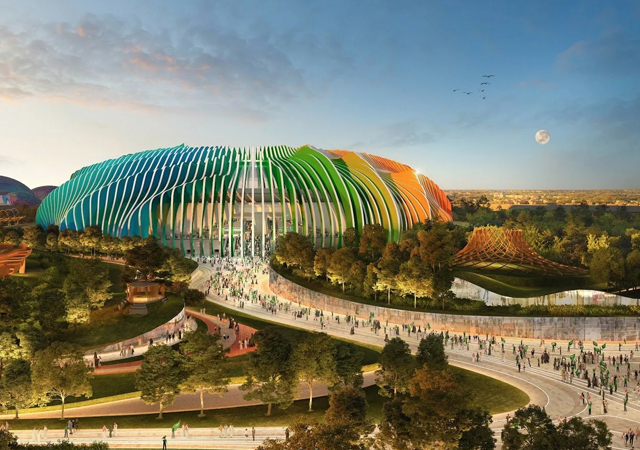 |
|
Qiddiya Coast Stadium |
Qiddiya Coast Stadium: Capacity – 46,000+. This new stadium will be located at the heart of the Qiddiya Coast Development, on the shores of the Red Sea, with other sporting infrastructure and hotels close by. Its design evokes the ripple effect of a ‘Mexican wave’ with a rich and joyful colour palette.
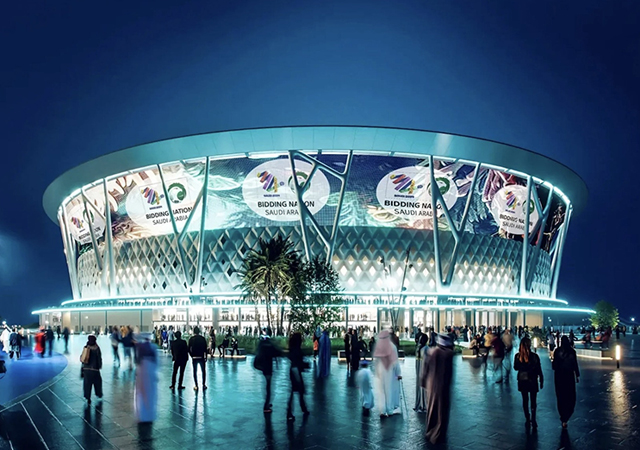 |
|
King Abdullah Economic City Stadium |
King Abdullah Economic City Stadium: Capacity – 45,000+. This new stadium will serve the vibrant King Abdullah Economic City area on the Red Sea coast. Its versatile design and organic aesthetic are inspired by how local coral reefs grow.
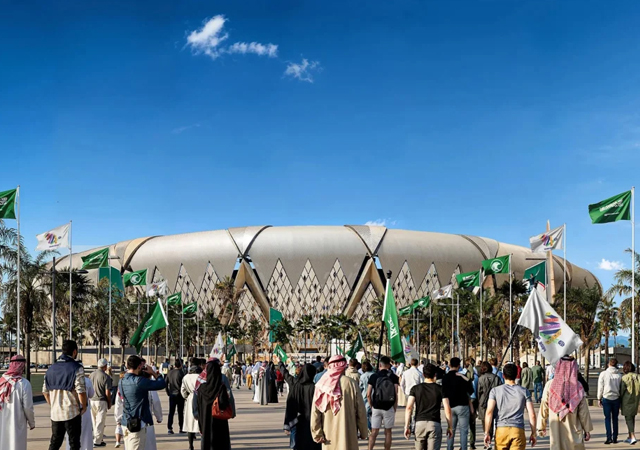 |
|
King Abdullah Sports City Stadium |
King Abdullah Sports City Stadium: Capacity – 58,000+. This stadium was built in 2014 and is known as ‘The Shining Jewel’ for its distinctive geometric architecture. Planned refurbishments will update the stadium to meet FIFA requirements and be integrated into the stadium’s existing architecture.
NEOM
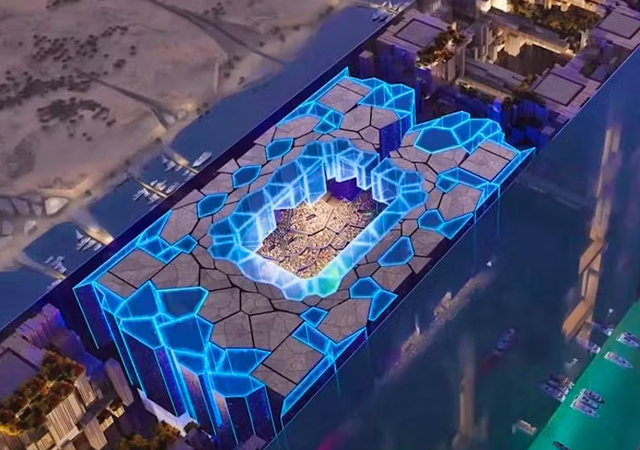 |
|
Neom Stadium |
Neom Stadium: Capacity – 46,000+. Expected to be one of the most distinctive and iconic stadiums in the world, this awe-inspiring facility will be situated within The Line – more than 350 m above ground. It will provide an unprecedented and exceptional experience for fans attending the tournament matches. Additionally, the stadium will be run entirely on renewable energy, generated primarily from wind and solar sources, marking a historic shift in stadium design, globally.
AL KHOBAR
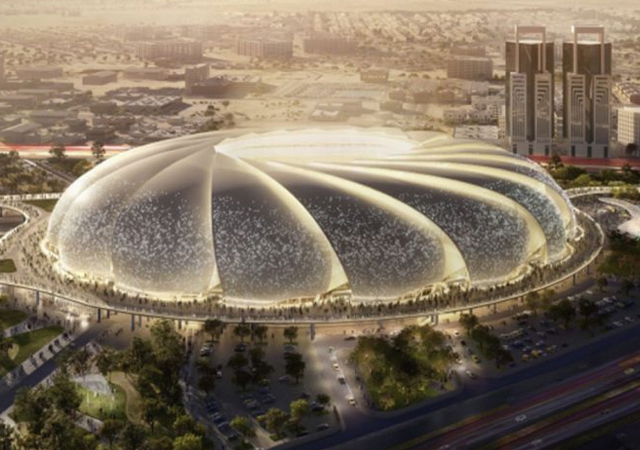 |
|
Aramco Stadium |
Aramco Stadium: Capacity – 46,000+. Situated on the Arabian Gulf coast in Al Khobar, this stadium will feature a dynamic design that is inspired by the sea – symbolising the ‘Dawwama’ whirlpools that appear off the coast during the warm, summer months. From a design perspective, the stadium will include interlocking sails and decorations that mimic natural wave patterns, in harmony with the coastal environment. After the tournament, the stadium will be home to a professional football club (see Page 45).
ABHA
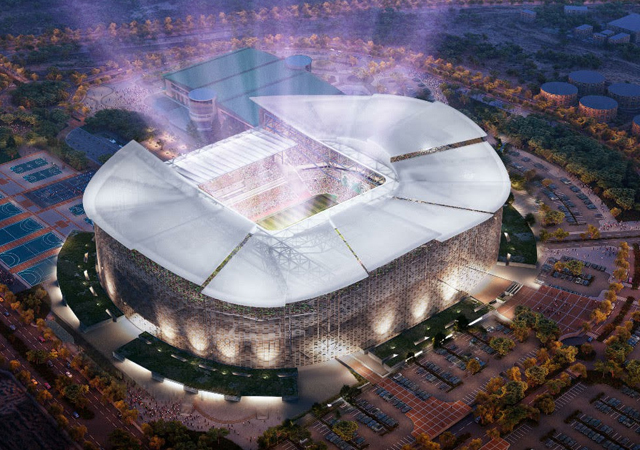 |
|
King Khalid University Stadium |
King Khalid University Stadium: Capacity – 45,000+. Currently used by the King Khalid University in Abha, this stadium will undergo a expansion that will increase its capacity as well as a renovation to modernise the stadium’s existing infrastructure and ensure its long-term sustainable legacy.
- 11 new spectacular stadiums
- Populous unveils designs for Aramco’s stadium
- The Rig. takes a step forward


